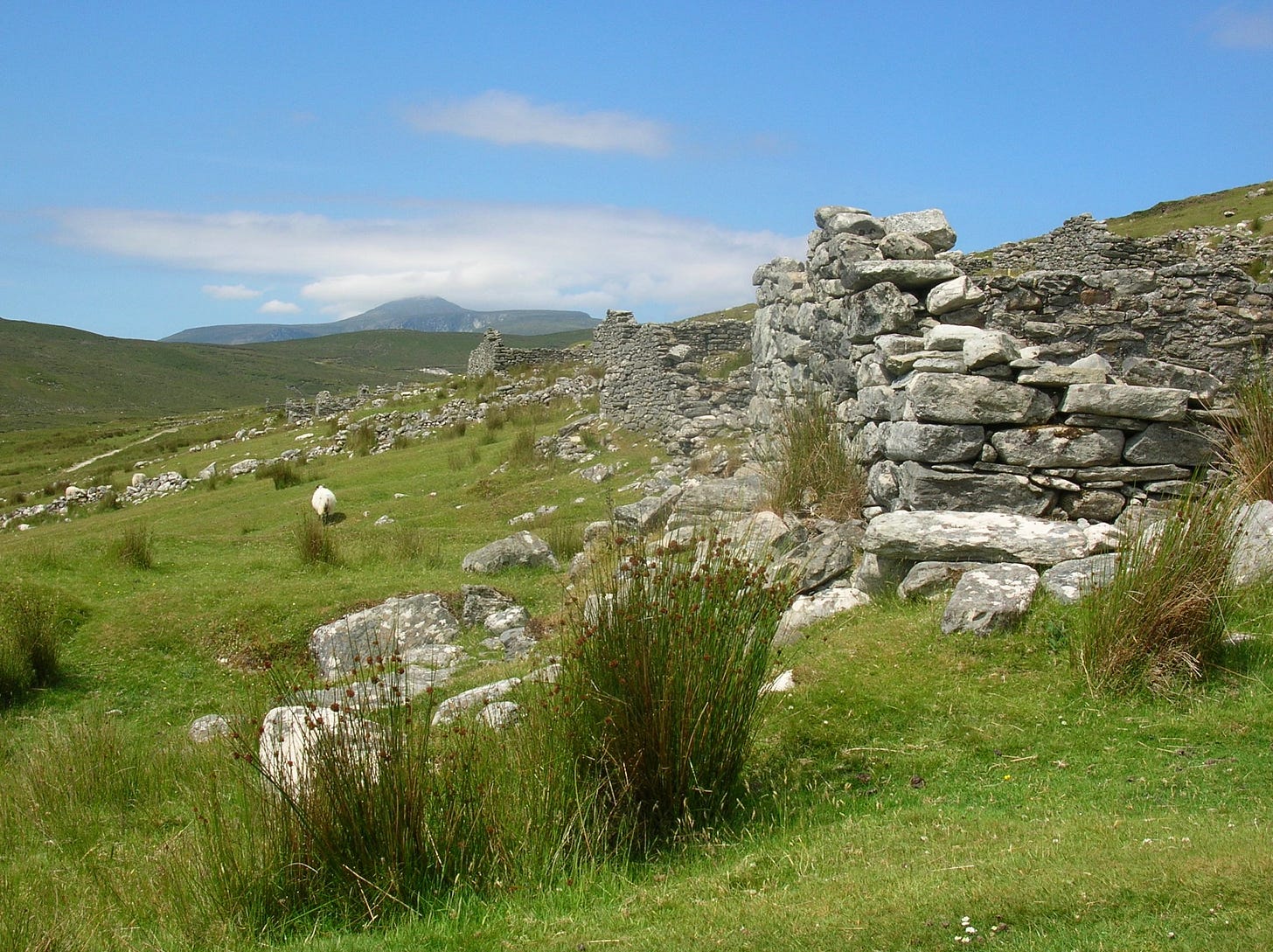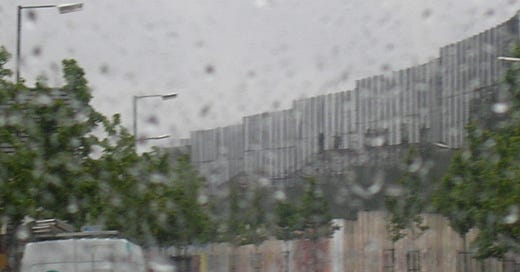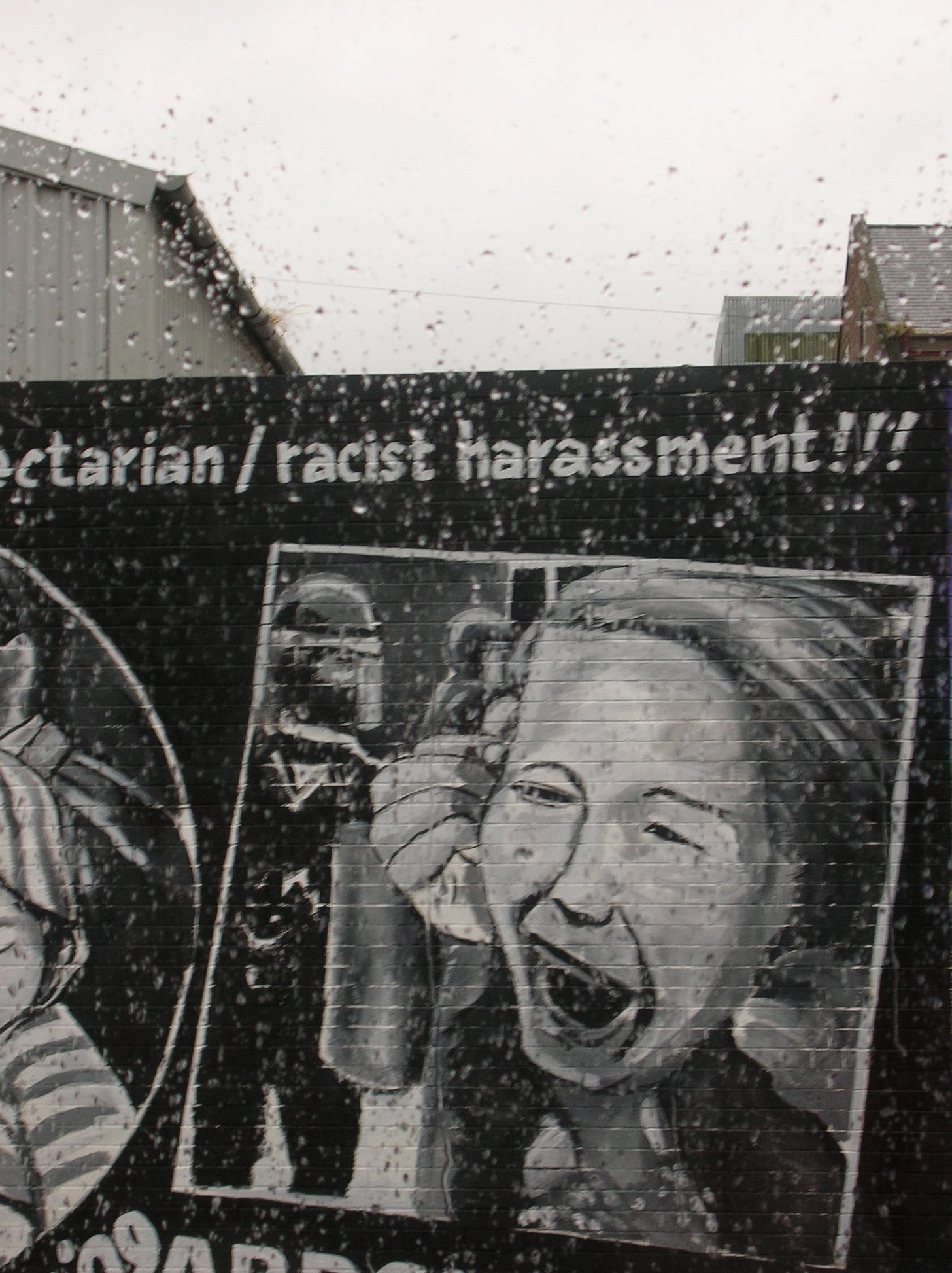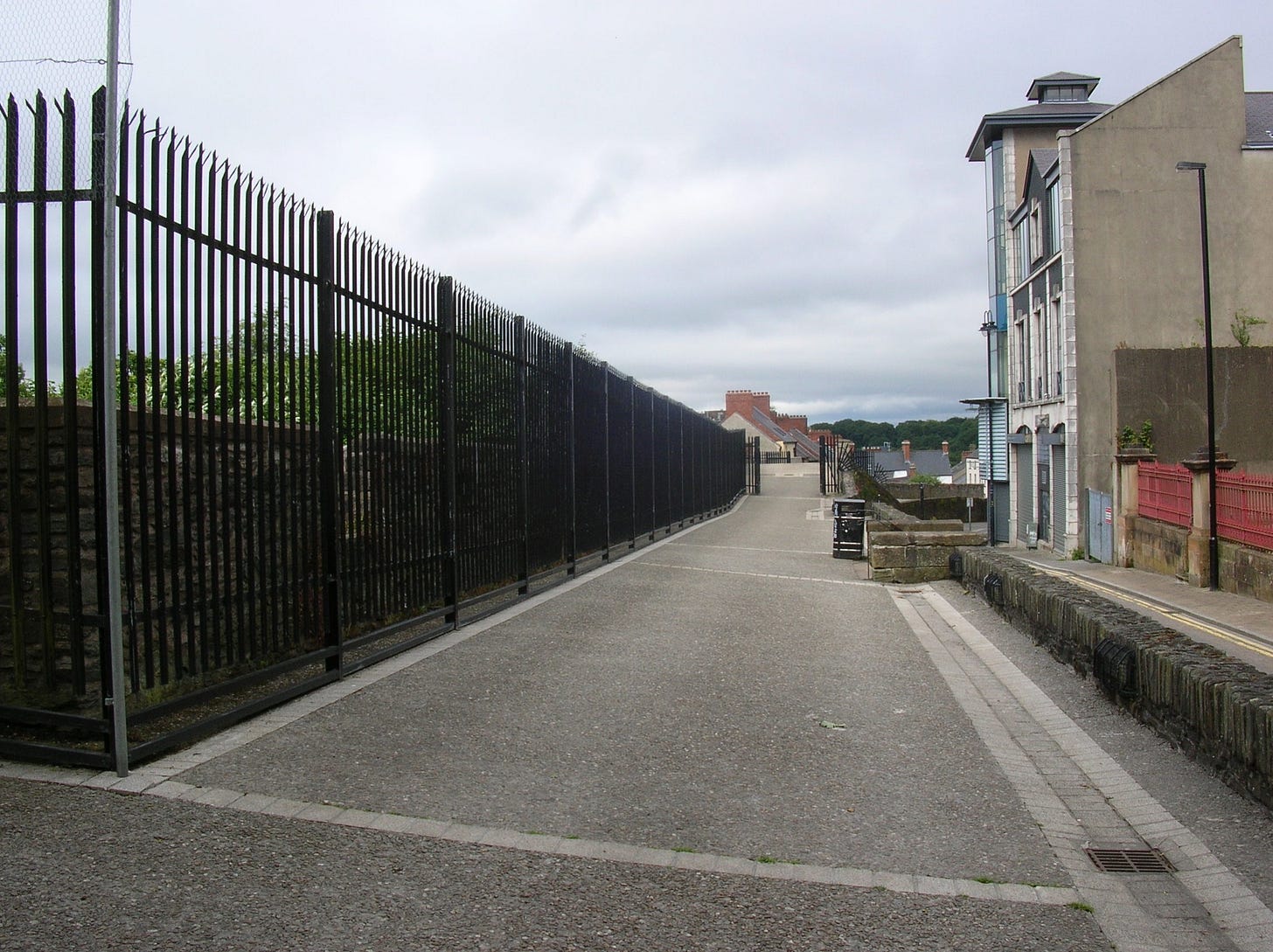On one side, the first fence appears to block the view, its NO TRESPASSING signs standing in for security guards. It stakes space, asserts control—a fence of defiance, panel after panel marking a line we are ordered not to cross. We’ve never trespassed, never even come close, except the time we saw him tumble down the steps like a discarded rug. We stayed until the ambulance arrived, but he doesn’t remember. We are unwelcome.
On the opposite side, another fence rises to cultivate the view, a neat, manicured barrier against our wild tendencies. It claims order, claims values—a fence of resistance, an aesthetic of separation, of standards carefully managed. But I wonder what’s being kept out, and what’s being kept in.
What if it never happened?
What if land, like air or water, had never fallen under exclusive dominion? What if, instead of mastering or owning it, we truly belonged to it? If we paused long enough to listen, might it have something to tell us?
This shift in perspective asks us to rethink how we define boundaries, not just around land, but between people. When belonging means care and shared responsibility, boundaries become acts of attentiveness and respect, not control.
The lines we draw around our homes and gardens reflect a deeply embedded cultural truth: we imagine ourselves as arbiters of what belongs and what does not.
Does that hold when the boundary is a body?
He placed his hand on my leg and asked if I might set aside my commitments for one night.
What if I told you about the night in my rebellious youth that my friends scaled a fence to swim in a pool, and how I learned that the border was not the fence but the unspoken expectations of gender and desire? What if, when I said no, he decided there was no need to listen, if I hadn’t been one of the ones who got to leave unharmed? He never looked at me the same way again. I wonder about others who crossed that fence, the risks they took, the limits they challenged.
What if the most consequential boundaries are the ones we don’t recognize until after they’ve been breached? What if the moment someone disregards your voice is the moment a wall appears between who you thought they were and who they’ve chosen to be?
A man once shoved me into a wall mid-sentence to silence me. Another, a boss, sat beside me on a hotel bed. He placed his hand on my leg and asked if I might set aside my commitments for one night. What if, instead of assuming entitlement, they’d wondered what would make me feel safe, whole, respected?
The Peace Walls in Belfast were erected, hastily, in 1969 by the British Army as violence flared between Catholic nationalists and Protestant unionists. What was meant to be temporary became permanent. I was still warned not to walk near them after dark in 2008, long after a formal peace agreement had been reached. This month, unrest has flared again, showing how these walls still mark deeply divided communities. The neighborhoods closest to the walls remain among Northern Ireland’s most economically deprived. Studies suggest the walls contained the violence, kept it out of sight—but did little to resolve the deeper conflicts. A wall is a wall, after all.
We say exclusion is protection, conflating control with peace.
The U.S.–Mexico wall hasn’t stopped people from crossing; it has only changed the where and the how. Migration continues through more dangerous terrain. Similar barriers in Israel, Kashmir, Hungary, and along Turkey’s border with Syria have not resolved the tensions that raised them. Containment, not resolution. Symbol, not solution.
What if the hardest walls to dismantle are the ones we’ve inherited, kept in place because no one encourages us to imagine life without them?
The Berlin Wall came down in 1989, but since then, more than fifty new border walls have gone up. What was once a symbol of oppression has become routine infrastructure.
The exception has become the rule.
We build fences around neighborhoods, install porch cameras, join apps that alert us to the unfamiliar. We direct suspicion toward strangers and call it vigilance, present curated lives, hiding our mess behind hedges and passwords. We say exclusion is protection, conflating control with peace.
But what if real safety isn’t something we build alone, but something we co-create? What if the courage we need now lies not in defending what’s ours, but in risking mutuality—to practice the kind of attention that asks not just what I’m protecting, but who I might be shutting out?
Safety doesn’t always require defense. Ownership doesn’t always require control. And stewardship—true stewardship—asks for something else: attention, responsibility, reciprocity.
We don’t need to possess something in order to care for it. Land. Voice. Another person’s story. None of these can be held with a clenched fist.
Boundaries can protect, yes. But they can also isolate. They can honor complexity, or erase it. They can offer care, or enforce power. It takes intention to recognize how our barriers affect others, and even more to adjust them with empathy. Stewardship asks us to relinquish the illusion of control and embrace a shared responsibility, a practice that extends beyond soil and stone to how we treat each other.
Boundaries are skin. They’re living, breathing organs—permeable, sensitive to touch, shaped by experience, and less elastic over time. They hold us together, even as they carry the imprint of our wounds.
The walls we build are never just structural. They’re emotional, historical, inherited. They persist long after the original conflict has passed.
Not every wall needs to come down. Not every fence is without purpose.
But some do. Some are.
What if we started asking what we’re not seeing?
~Elizabeth

Hello, friends. I’m glad you’re here.
Who’s going to be first to dish a neighborhood fence story in the comments? Or to tell me which of your boundaries feel essential, and which might be ready to come down? Have you crossed a border lately? I’m always inspired by your stories and reflections.
Also inspiring, and discovered a few hours after I hit publish on this piece (so I’m coming back to edit it in), is this poem read by my friend, Eileen Dougharty. I urge you to take it in alongside today's Scratch. The parallels are obvious, the timing is awesome, and the poem will linger with you long after you close this window.
If you need to read and run, I get it. But I hope you’ll tap a 💚 or hit the restack ♻️ to help me connect with folks I haven’t met yet.
If you’ve been here for a minute, it won’t surprise you to find me asking—again—what drives the distances between us. But this week brought something new. Did you catch it? That what if refrain was inspired by a Saturday workshop with the
. It was a creative challenge to bring repetition and reflection together in a single piece, and I enjoyed the process. I hope you did, too!The workshop itself? Y’all, it’s been a long time since I’ve felt that much good writing mojo in one room. I deliberated longer than I’d like to admit over whether I could spare the time. The verdict: How silly of me to overthink it! It was accessible, affordable, low-key, and not scary at all. Important for someone like me who’s always slightly convinced she won’t fit in.
You can find all their offerings at the link above. And no—they didn’t ask me to write this. I’m gushing entirely of my own free will.
That’s it for this time, unless you missed the audio version and want to check that out. You’ll find the link at the top of the page.
As always, Chicken Scratch is free because I’m committed to building bridges that aren’t tied to wallets. If you can afford a paid subscription (less per month than a fancy coffee!) or one-time donation (any amount is appreciated) either will help me keep this soul-project going.










I’ve lived in countries where there is no private ownership of land and most often, the result is uniform poverty. I’m think of Malawi, in particular, where land use is allocated by a local headman and cannot be purchased except in certain limited areas. The result is that tenancy is tenuous, improvements and investments are not made and the land degrades because no one has a real ownership interest and incentive. Ownership usually means areas defined by some type of boundary.
I’m not challenging the spirit of your point, but there are some practical considerations in play.
Australian aborigines believe that the land owns them. Us immigrants will never fully grasp that unfortunately.